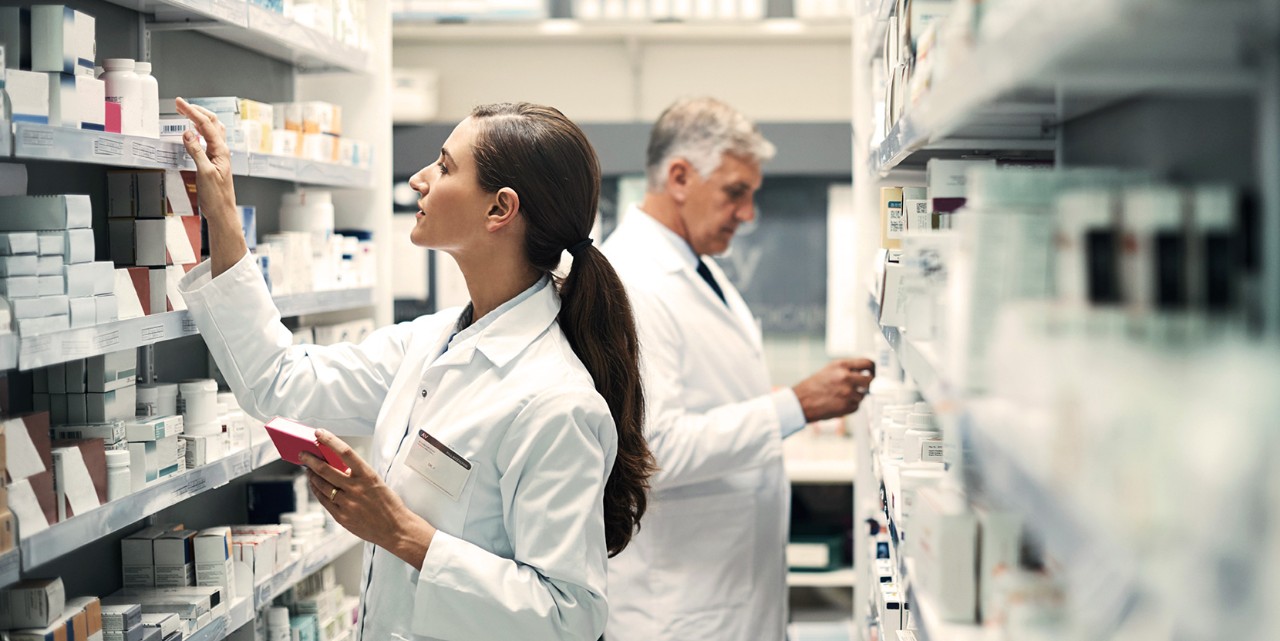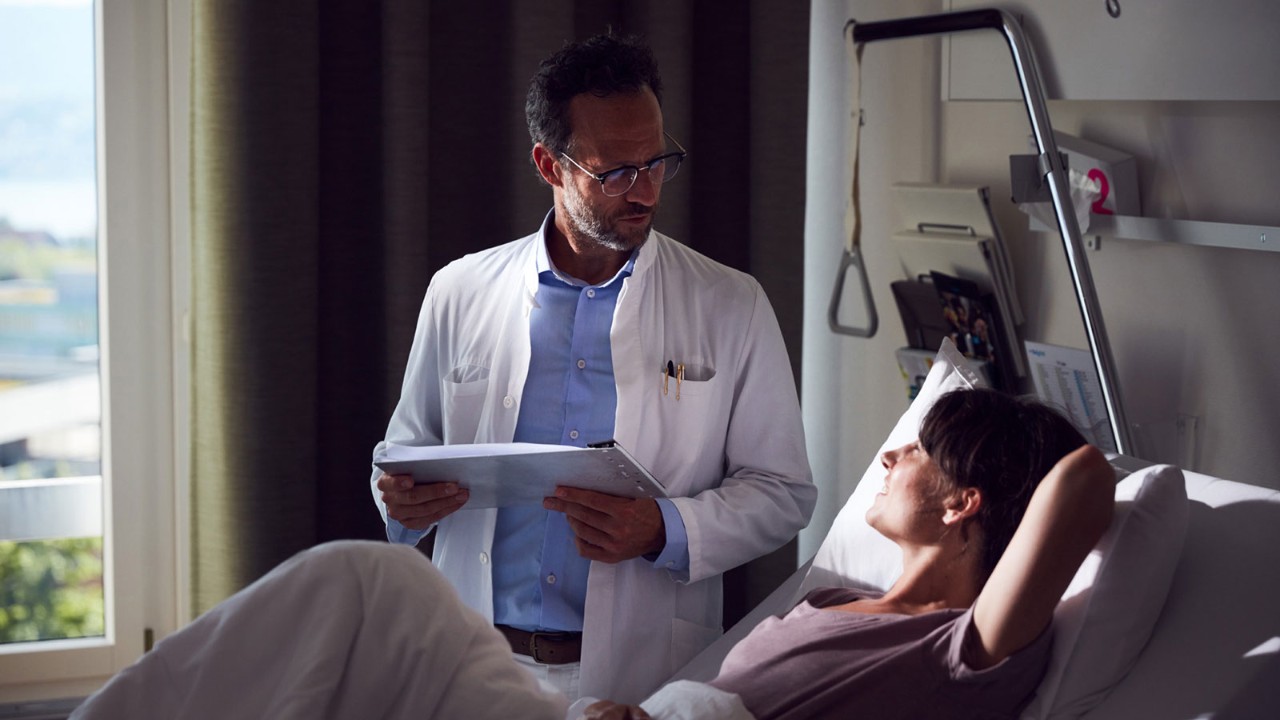The battle against multi-resistant bacteria
Often, antibiotics that combat other bacteria effectively are left powerless against multi-resistant bacteria. The cause of the problem is also part of the solution.

When we take an antibiotic, it is supposed to kill off harmful germs in our body. To this end, the industry uses active ingredients that originate from nature: more precisely from fungi and bacteria that produce antibiotics to protect themselves from intruders.
What are multi-resistant germs?
Today, however, some antibiotics are only partially effective or no longer effective at all. The reason: many bacteria have become resistant to the drugs. This has to do with the fact that human medicine and agriculture have used more and more antibiotics in animal husbandry worldwide since the 1940s.
Bacteria do not simply put up with this. Here, too, they make use of a natural, biological process: they form resistances in order to survive. This phenomenon has been around since bacteria have existed.
This means that every time we take an antibiotic, we kill harmful bacteria - but the bacteria that have already become resistant to the antibiotic also benefit. This allows them to spread further.
How do bacteria become resistant to antibiotics?
When bacteria multiply, they have to copy their genetic make-up. Errors may occur during this process. This is how mutations occur. Certain of these mutations lead to a bacterium becoming resistant to certain antibiotics.
There are also various mechanisms that help bacteria to build up resistance. The Federal Office of Public Health (FOPH) lists four main ones: On the one hand, certain bacteria can excrete the antibacterial medication. Other bacteria manage to change their cell envelope in such a way that the antibiotic can no longer penetrate to destroy it.
Other bacteria are true magicians: They manage to chemically alter drugs in such a way that they no longer work. Other germs modulate the proteins on their surface in such a way that an antibiotic can no longer dock.
When do we start talking about multi-resistant germs?
"The worrying thing is that many dangerous bacteria are showing more and more resistance," says Andreas Kronenberg. The infectiologist heads the Swiss Center for Antibiotic Resistance ANRESIS, which is run by the University of Bern and supported by the FOPH.
If there are several resistances in the same bacterium, the experts speak of multi-resistant germs. Only selected antibiotics can be used effectively against them. In addition, there are bacteria that are resistant to all existing antibiotics. Experts call these pan-resistant germs. All existing antibiotics are ineffective against them.
How dangerous are multi-resistant germs?
If you have an infection with antibiotic-resistant germs, treatment is often prolonged because various antibiotics have to be used to get the infection under control. "Antibiotic resistance causes deaths, prolongs hospitalization and results in high treatment costs," says Andreas Kronenberg. Globally, such infections are on the rise.
For Switzerland, the FOPH estimates that the disease burden is around 85 infections per 100,000 inhabitants and that around 300 people die each year from infections with resistant pathogens. Switzerland is therefore less affected by such infections in relation to its population than France or Italy, but more so than the Netherlands or the Scandinavian countries.
Some of these cases are caused by germs that are resistant to all antibiotics. "These pan-resistant bacteria are particularly dangerous, as they can make treatment extremely difficult for patients," says Kronenberg. However, these germs are very rare in Switzerland.
Open wounds contracted abroad often lead to such serious infections. In some cases, amputation of the affected limbs is the only way to prevent blood poisoning throughout the body, says Kronenberg. Fortunately, this has only happened in a few cases in Switzerland so far.
“Antibiotic resistance causes deaths, prolongs hospitalization and results in high treatment costs.”
How can you get infected?
The risk of infection is particularly high abroad. In addition - and very few people are aware of this - tourism and food imports are responsible for the fastest spread of resistant bacteria. But there are also some hotspots for multi-resistant germs in this country. What you need to know
-
Traveling abroad
"People abroad are most often infected with multi-resistant germs," says infectiologist Andreas Kronenberg. For example, a young man from Switzerland travels to India - a country that has a large number of multi-resistant germs due to its very high use of antibiotics. The man falls off a rickshaw and breaks his leg.
The fracture is open and he has to go to hospital. Dangerous bacteria enter his body via the open wound. The wound becomes very inflamed.
Back in Switzerland, the doctors can only treat him with so-called reserve antibiotics because of a multi-resistant germ. These are antibiotics that are used in cases of severe resistance.
"Such cases pose major challenges for hospitals in this country, as patients with multi-resistant germs have to be isolated at great expense to prevent them from passing the germs on to other patients or staff," says Kronenberg.
Travelers should therefore be particularly careful in countries with a dangerous resistance situation. These include India, Greece and Turkey, for example. In such countries, multi- or even pan-resistant germs get into our bodies or onto our skin, particularly via water or food.
"Anyone who has to visit a doctor or hospital abroad has a particularly high risk of becoming infected with a multi-resistant germ," says Kronenberg. Tests of returning tourists have shown that many of them are colonized with dangerous germs.
That in itself is not a problem. It only becomes dangerous when those affected have an open wound or a weakened immune system. In addition, those affected can pass these germs on to weakened people in their environment - or spread them in a hospital.
"It is therefore important that anyone who visits a medical facility in Switzerland within twelve months of traveling mentions the trip," says Kronenberg. Such information helps to take the necessary measures to prevent the germs from spreading.
-
Hospitals and medical facilities
The number of resistant germs is comparatively high in healthcare facilities, as bacteria are found here in an environment in which antibiotics are very frequently used to treat patients.
As a result, bacteria are particularly eager to build up resistance so that they can survive.
In this environment, resistant germs are transmitted through contact between patients, their visitors and care staff. On the other hand, germs can also reach humans via contaminated surfaces or medical devices.
-
Meat products
A hotspot for germs lurks in the kitchen. This is when you prepare raw meat - especially raw poultry. "Almost three out of four chickens you buy in the supermarket are colonized with so-called ESBL bacteria," says expert Kronenberg.
These germs are intestinal bacteria that have developed a resistance mechanism to a number of antibiotics. These include antibiotics from the penicillin and cephalosporin groups.
It is therefore important to cook the meat thoroughly and to clean the cutting board, knives, kitchen surfaces and hands thoroughly with soap.
Far less frequently, resistant germs can also contaminate dairy products, eggs, seafood, vegetables and fruit.
-
Pets and farm animals
Resistant germs can also be transmitted from animals - such as domestic cats or calves on a farm - to humans through contact with the animal. And vice versa, we humans can also pass on resistant germs to animals after antibiotic treatment.
-
Wastewater in rivers and lakes
We humans also excrete multi-resistant germs via the toilet - especially after antibiotic treatment. Although today's wastewater treatment plants catch 99 percent of these germs - according to the Federal Office of Public Health (FOPH) - multi-resistant germs still end up in rivers, lakes and groundwater reserves.
However, the likelihood of humans picking up multi-resistant germs via this cycle is very low, say experts.
-
Liquid manure on fields
Farmers are now using far fewer antibiotics in livestock farming - their use has almost halved since 2014. Nevertheless, many animals are still treated accordingly.
They also excrete resistant germs - and these end up on the fields as liquid manure. In this way, multi-resistant bacteria can get onto plants, vegetables or fruit, seep into the groundwater or be washed into rivers and lakes.
Symptoms: How do you realise you have a multi-resistent germ?
In principle, it is normal for certain resistant germs to colonize our skin, mucous membranes and intestines. These bacteria only become a health problem if they can multiply too much and lead to an infection in the body.
These frequent infections can be caused by multi-resistant germs:
-
Bladder infection
Statistics show that almost every second woman suffers from cystitis at least once in her life. The intestinal bacterium Escherichia coli is usually responsible for this. If it multiplies excessively there, an infection occurs. As a rule, this can be treated well with antibiotics if the inflammation does not resolve itself.
However, women after the menopause are very often affected by chronic bladder infections, says infectiologist Andreas Widmer. The hormonal change favors such inflammations. Treatment is often difficult for these women because the antibiotics are used over a longer period of time - and thus lose their effect as the bacteria become resistant.
Bladder inflammation manifests itself with these symptoms: Burning pain when urinating, strong, sudden urge to urinate, although hardly any urine is released, pain in the abdomen, sometimes fever, pain in the kidney area.
-
Pneumonia
Various bacteria can enter the lungs via our airways and trigger an inflammation there. The most common type is pneumococcus.
Bacteria such as Klebsiella pneumoniae or Staphylococcus aureus can also lead to pneumonia in people who have to stay in hospital for a long time due to illness - especially if the person's immune system is already very weakened, particularly after a viral infection with the flu virus (influenza).
In all cases, the symptoms of pneumonia include high fever, severe coughing (with sputum production), shortness of breath and pronounced physical weakness.
Experts recommend that older people in particular measure their oxygen saturation in the blood if they are unsure whether it is a serious inflammation. Such measuring instruments can be bought for a few francs in the pharmacy and are easy to use on the finger. Modern sports watches also take such measurements.
"Oxygen saturation is the most important indicator of a serious infection," says infectiologist Widmer. "If the saturation is below 90 percent, you need to see a doctor."
Here, too, there are strains of bacteria that have certain resistances to antibiotics. This applies above all to bacteria in hospitals, because they are present in higher numbers there and become particularly resistant due to the high use of antibiotics.
-
Intestinal infection
It is quite normal for us to have a large number of harmful bacteria in our intestines. They can make us ill if they multiply too much and gain the upper hand. This can lead to an infection.
The gut flora is particularly weakened after antibiotic treatment. This condition can favor a further severe intestinal infection with Clostridioides difficile.
Symptoms of an intestinal infection include fever, severe and often persistent diarrhea, abdominal pain and cramps. Without a high fever, these infections usually heal without treatment. However, if the fever is high, you should see a doctor urgently.
-
Wound infection/blood poisoning
If bacteria get into an open wound on the surface of the skin or in the body, they can also trigger inflammation there.
The symptoms are: Redness around the wound on the surface of the skin, the area becomes warm and swollen, pus forms, chills and fever are possible. If the local inflammation migrates into the body, it can lead to blood poisoning. The signs are: Severe feeling of illness, fever and chills, increased respiration, confusion, decreased urination.
Treatment: How do you get rid of multi-resistant germs?
As a rule, the infections are treated with the antibiotics intended for this purpose. It therefore often only becomes clear that it is a resistant germ when the standard therapy does not work.
Today, however, doctors are increasingly testing for resistance before treatment. Such diagnostic clarifications are particularly indicated in the case of large wound infections. This applies in particular to those affected who are at a higher risk of being colonized by multi-resistant germs. This includes people who work in agriculture. There are many resistant germs in livestock farming that are also transmitted to humans.
Diagostic tests are also needed for elderly people living in nursing homes who have contracted an infection - or for people who have contracted a wound abroad. "The resistance situation there is worrying in many regions such as India, Greece and the Balkan countries," says Andreas Widmer, infectiologist and President of the National Center for Infection Prevention.
"The tests are important so that as many harmful germs as possible are detected and can be optimally treated at the same time," says Widmer.
Studies have shown that high doses of antibiotics over a short period of time are more effective therapeutically than low doses administered over a longer period of time. "We try to kill off all germs as quickly as possible," says Widmer. The better this is done, the less likely it is that certain germs will survive and develop resistance.
In the case of complicated infections, there are clear treatment guidelines along which doctors then use different antibiotics. If a bacterium is particularly resistant, a so-called reserve antibiotic is used as a last treatment option.
The reserve preparations may only be used in exceptional cases - so that as few bacteria as possible can become resistant to these last-resort drugs and the preparations remain effective for as long as possible.
“In regions such as India, Greece and the Balkan countries, the resistance situation is worrying.”
The most common multi-resistant germs
"Numerous measures to reduce the use of antibiotics in human medicine and in animals have led to a stabilization of the resistance situation among bacteria in human medicine," says infectiologist Widmer.
Nevertheless, it is important to keep an eye on some of the multi-resistant and therefore disease-causing germs. "We are most concerned about the development of the intestinal bacteria Escherichia coli and Klebsiella pneumoniae," says Widmer. They are among the most common bacteria that cause infections in humans. "We are increasingly seeing multi-resistant strains of these bacteria."
The so-called ESBL germs have also been in the spotlight for several years. These are various intestinal bacteria (primarily Escherichia coli) that are resistant to a wide range of antibiotics from the penicillin category. "Unfortunately, the number of ESBL germs continues to rise," says Widmer.
One reason for this is that these germs can easily pass on resistance to each other. On the other hand, travelers are also responsible for this: "People returning to Switzerland from countries in the Far East are often colonized with these pathogens, even if they don't fall ill," says Widmer. As a rule, these people are carriers of these germs for over a year.
In livestock farming, experts are observing a sharp increase in the bacterium Staphylococcus aureus (MRSA). "Fattening farms with pigs are particularly affected - because they use a comparatively large amount of antibiotics," says Widmer.
The germs quickly spread from pigs to humans: As studies have shown, in addition to farmers who keep pigs, their family members are also usually colonized with these germs.
“We are most concerned about the development of the intestinal bacteria Escherichia coli and Klebsiella pneumoniae.”

The infectiologist is a professor at the Institute for Infectious Diseases at the University of Bern. He also heads the Swiss Center for Antibiotic Resistance ANRESIS, which acts as a national monitoring system and research instrument for antibiotic resistance and antibiotic consumption.

The infectiologist is deputy chief consultant emeritus at the Clinic for Infectiology and Hospital Hygiene at the University Hospital Basel. He is also the founder and president of Swissnoso, the National Center for Infection Prevention.


